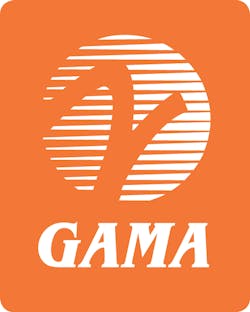Establishing a Clear Flight Plan for AAM’s Takeoff
The General Aviation Manufacturers Association (GAMA) on Aug. 14 formally submitted comments to the U.S. Federal Aviation Administration’s (FAA) proposed Special Federal Aviation Regulation (SFAR) for Integration of Powered-Lift: Pilot Certification and Operations; Miscellaneous Amendments Related to Rotorcraft and Airplanes. GAMA methodically worked with its membership to review the proposal and put forward comments that reflect the SFAR’s critical role in enabling initial powered-lift operations. The SFAR will also provide the regulatory environment required to collect necessary operational data that will inform future permanent rulemaking.
“The world’s leading AAM manufacturers have collaborated on targeted comments that if accepted, will improve aviation safety and alleviate regulatory uncertainty forced on the industry by FAA reversals of key decisions. With the FAA’s publicly stated target date for enabling initial eVTOL and other powered lift aircraft entry-into-service of early 2025, there is an urgent need for a performance based regulatory framework that permits the industry to complete the aircraft certification, pilot licensing and operational approval processes necessary to meet this timeline. Just last month, the FAA doubled down on its commitment to its early 2025 initial operational timeline with the publishing their first AAM implementation plan dubbed ‘Innovate28’. This document calls for integrated ‘at scale’ AAM operations in key cities by 2028 as a showcase in time for the 2028 Olympic Games in Los Angeles. To achieve this ‘at scale’ objective, near term initial operations must be enabled,” said Pete Bunce, GAMA President and CEO.
“We acknowledge the significant work and challenges created for both industry and government by the decision to type certificate eVTOL aircraft as powered-lift and urge the FAA to take full consideration of the expertise behind the safety-based comments provided by a very broad group of AAM manufacturers, operators and industry trade groups. We must ensure that the final SFAR establishes a practical pathway to initial pilot certification as well as an appropriate operational framework consistent with the U.S. led initiative at ICAO. Doing so would provide a clear regulatory framework to ensure safety and facilitate industry growth in the U.S. and worldwide. Failure to provide timely and practical regulatory certainty will jeopardize the U.S. industry's global leadership position in Advanced Air Mobility,” Bunce said. In its comments, GAMA focuses on four critical areas of interest to be addressed within the SFAR: pilot certification, dual controls, flight simulation training devices and operational rules. GAMA and the entire AAM community urge the FAA to enable the initial pilot cadre to be certificated by adding a powered-lift type rating to an existing airplane or helicopter category type certificate and to apply the appropriate operating rules for powered-lift operations based on the performance characteristics of each aircraft type. More specifically, the legacy fuel based energy reserves and the antiquated requirement to design and certificate a dual control variant of each aircraft platform needs to be addressed. There is also significant concern that there are not adequate FAA resources to support the SFAR’s framework as proposed in a timely manner, especially as it relates to pilot certification and training.
Additional aviation stakeholder organizations supporting GAMA’s submitted comments include the Aerospace Industries Association (AIA), Aircraft Owners and Pilots Association (AOPA), Experimental Aircraft Association (EAA), Helicopter Association International (HAI), National Air Transportation Association (NATA), National Business Aviation Association (NBAA), and Vertical Flight Society (VFS).
To view the submitted comments, CLICK HERE.
